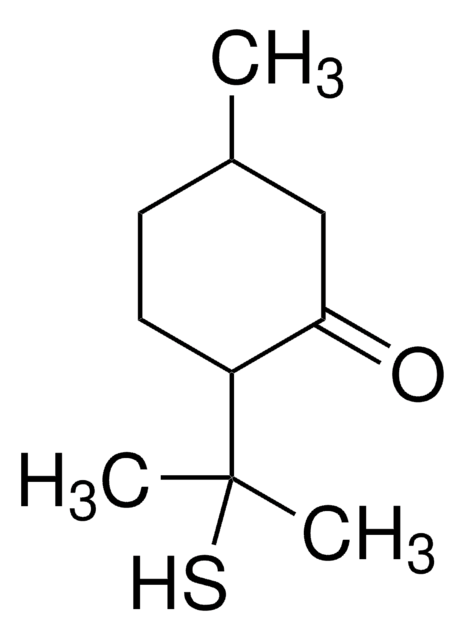W243906
Ethyl hexanoate
≥98%, FCC, FG
Sinonimo/i:
Caproic acid ethyl ester, Ethyl caproate
About This Item
Prodotti consigliati
Origine biologica
synthetic
Livello qualitativo
Grado
FG
Halal
Kosher
agenzia
meets purity specifications of JECFA
Conformità normativa
EU Regulation 1334/2008 & 178/2002
FCC
FDA 21 CFR 117
FDA 21 CFR 172.515
Densità del vapore
5 (vs air)
Saggio
≥98%
Indice di rifrazione
n20/D 1.407 (lit.)
P. eboll.
168 °C (lit.)
Densità
0.869 g/mL at 25 °C (lit.)
applicazioni
flavors and fragrances
Documentazione
see Safety & Documentation for available documents
Allergene alimentare
no known allergens
Organolettico
banana; green; waxy; fruity; pineapple; sweet
Stringa SMILE
CCCCCC(=O)OCC
InChI
1S/C8H16O2/c1-3-5-6-7-8(9)10-4-2/h3-7H2,1-2H3
SHZIWNPUGXLXDT-UHFFFAOYSA-N
Cerchi prodotti simili? Visita Guida al confronto tra prodotti
Descrizione generale
Applicazioni
- Formation of Key Aroma Compounds During 30 Weeks of Ripening in Gouda-Type Cheese Produced from Pasteurized and Raw Milk.: The study investigates the formation of key aroma compounds, including ethyl hexanoate, during the ripening of Gouda-type cheese. The results provide insights into the ripening process and its impact on cheese flavor development (Duensing et al., 2024).
Avvertenze
Warning
Indicazioni di pericolo
Consigli di prudenza
Classi di pericolo
Flam. Liq. 3
Codice della classe di stoccaggio
3 - Flammable liquids
Classe di pericolosità dell'acqua (WGK)
WGK 1
Punto d’infiammabilità (°F)
127.4 °F - closed cup
Punto d’infiammabilità (°C)
53 °C - closed cup
Dispositivi di protezione individuale
Eyeshields, Faceshields, Gloves, type ABEK (EN14387) respirator filter
Scegli una delle versioni più recenti:
Possiedi già questo prodotto?
I documenti relativi ai prodotti acquistati recentemente sono disponibili nell’Archivio dei documenti.
I clienti hanno visto anche
Il team dei nostri ricercatori vanta grande esperienza in tutte le aree della ricerca quali Life Science, scienza dei materiali, sintesi chimica, cromatografia, discipline analitiche, ecc..
Contatta l'Assistenza Tecnica.












